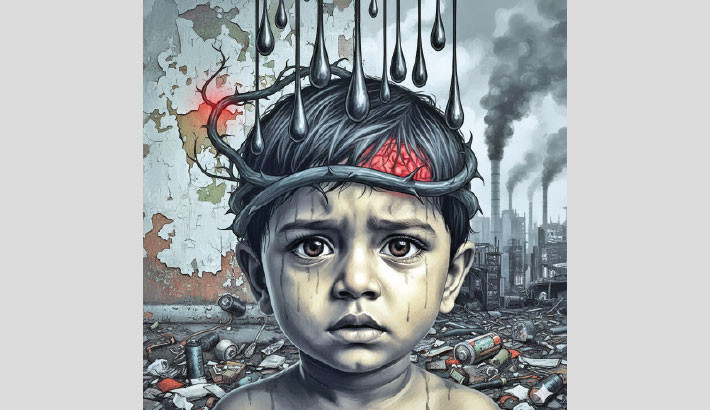65% of Dhaka children found with dangerous lead levels: BBS
Daily Sun Report, Dhaka
Published: 20h ago

A new national survey has revealed an alarming rise in lead contamination among young children in Bangladesh, with 65% of children in Dhaka found to have dangerously high blood lead levels.
On Sunday, the Bangladesh Bureau of Statistics (BBS) released the findings of the Multiple Indicator Cluster Survey (MICS) 2025, conducted in partnership with UNICEF.
Nationwide, 38% of children aged 12 to 59 months and nearly 8% of pregnant women were found to have lead levels exceeding internationally accepted thresholds.
According to the survey, lead exposure poses a severe threat to brain development and long-term cognitive health. The issue cuts across income groups – over half of the affected children belong to the richest households, while about 30% are from poorer families, highlighting the widespread and systemic nature of lead contamination in Bangladesh.
MICS 2025 also paints a worrying picture of worsening malnutrition. The proportion of children who are underweight – or suffering from wasting – has risen sharply from 9.8% in 2019 to 12.9% in 2025.
Maternal anemia remains extremely high, affecting 52.8% of mothers, placing both women and newborns at heightened risk, the survey found.
Public health experts say the findings underscore an urgent need to strengthen nutrition programmes, improve breastfeeding practices, and expand health services across the country.
UNICEF and BBS officials noted that lead exposure, malnutrition, and maternal anemia together threaten decades of progress in maternal and child health.
They stressed that coordinated action, stronger regulations, and public awareness campaigns are essential to protect children from preventable harm.
The full MICS 2025 report, covering 63,000 households and more than 200 indicators, is expected to guide national policies and investments aimed at safeguarding the health and development of every child in Bangladesh.

